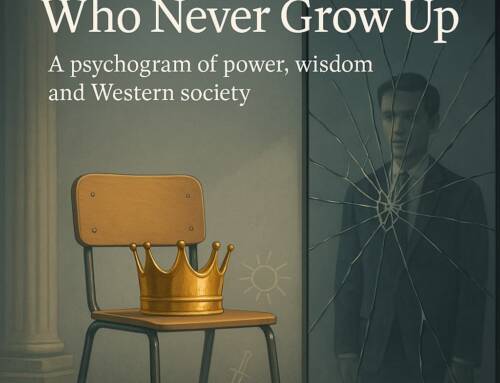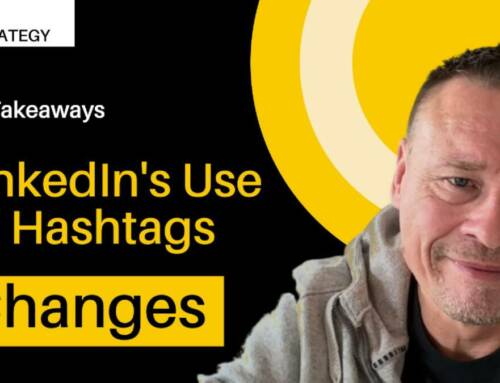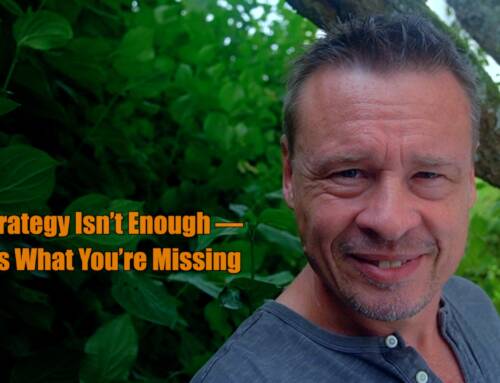As a communicator with 25+ years in global development cooperation, I am naturally a practical individual, unrelentingly pointing at getting impact and tenaciously trying to implement a view on the immediate value proposed to the reader or viewer.
I have, in the recent past, fallen short of achieving an overarching purpose to my output. I was sacrificing my inner stability for increased productivity even though I knew from past experiences that this stability suffers when I lose sight of a clear purpose with the work I do for clients.
Now, I am very much aware that there are some tasks that have to be done that will never win any prizes; also, I understand that at times I fail to look back to realize that the aim of my productivity is to satisfy the wishes of my clients, their clients and therefore contribute to the greater aim of it all — which there is a lot of in development cooperation.
Digging deeper to find the key
So I did a small research project asking clients and communication professionals questions about myself. I wanted to get clues on how to improve as an advisor and thereby get more purpose drive into the immediate communications activities carried out with them. One of the respondents had this to say:
‘You take on full responsibility for your assignments. You don’t just do a smooth edit, throw the text onto the site and that’s it.’
Great, obviously this was exactly the kind of feedback I am proud of.
However, there was something stinging in this. I knew that lately, I had become tired of the ever-new contributing authors who are unfamiliar with the editing processes for a website reacting annoyed with me proposing more than simple text edits, annoyed even of the mere fact that there was someone doing this to them in the first place.
On top of it all, there are more and more government regulations that make the contractual side of the interaction with my clients a real nightmare.
In other words, my ambition was very much intact, but my drive was slowing down considerably. Great advisors need both ambition and drive. This is exactly the point!
So what can I do? I’m ambitious, but my ambition doesn’t clearly resonate with the purpose of the output of my work. It lacks the strategic direction towards a specific purpose where I could drive it to. This is something that I needed to improve.
Set clear, specific goals
Part of my ongoing challenge in my work with clients has always been setting clear objectives that combine their habitual wish to showcase their work to the world with achieving some sort of impact with this activity — ideally impact that could be measured easily in order to relay this as positive proof for impact to their respective clients.
We would start by creating clear goals to develop articles, videos and other information products, but before long, it would turn out that the demand for the products was much lower than what we had anticipated. It dawned on me that the so-called interest alone was insufficient to drive substantial traffic and that setting clear goals based on purpose, passion, and values were necessary for us to succeed.
Today, I try to concentrate on small goals to discover whether the information stands a chance for demand. I try to clearly lay out what my client can expect to gain by developing a product and maybe test a hypothesis. Testing communications tactics, unfortunately, is something my clients have no natural inclination to; and secondly, I found that generally speaking, one thing is almost always the case with communications in development cooperation: Clients are usually aiming low. They want to cater to certain assumed interests of their thematically close-by target groups or engage in rather opaque awareness-raising.
Approaches with low aims result in communications action without any serious drive to get specific action in return or to close a deal of some sort. The elusiveness, on the other hand, explains why there are often no sufficient resources made available to see things through to the end, to really carve out all the results of an event, reformat and repurpose them across different platforms.
It also elucidates why we see a lot of resources being wasted on branding activity. Branding is viewed as a highroad to broadly crank up one’s institutional reputation. The best way to do it is to have good content ready and to get it in front of a lot of people. Your brand will gain by itself. If you don’t have good content or you don’t see the communications funnel through to the end, then many people resort to an overly simplistic form of branding logic. That is to stick one’s logo everywhere and frontload all texts with your project’s complicated title.
In lieu of classic products or services to be physically sold to customers, development cooperation outreach needs to embrace the idea of providing tangible value to all those who might be willing to give it a chance and listen to them—a justification to spend one’s worktime on listening to what your project has to say. It’s worktime because most of the content from development cooperation communications is consumed at and for work.
Take the view from the reader side
In other words, the content needs to solve someone’s tangible problem. You’ll get demand when your case studies are formatted in a way that the listener can apply them straight to their own setting. Typical listeners are not interested in all the issues a project ran in to or even the project’s critical aim. They’re struggling with one specific issue. They want to see how you tackled that—but only that one. Because then they want to quickly go and tend to the work on their screen again.
If you think of this a bit, it’ll be clear that working with creating small specific problem solution tidbits is much more helpful for attracting listeners than conceptualizing it from the other end as a compilation of all those aspects that can be learned from your project.
There’s a saying in video editing: You have to kill your darlings. It means that the editor has a great shot in his or her footage but if the shot doesn’t fit the story, it needs to go.
So if you’re working on communications material for a project and you want to stand a chance for impact, forget about showing all your project results and start from specific aspects you have to offer to potential listeners. You need to think of these people and what they will need, not only what you have to offer. Then package it bit by bit, and deliver it package by package, so that everyone can take the small package he or she wants. Not a big box.
The darling you need to kill in terms of the example with case studies is your great solution to a problem that unfortunately no one in your identified target group has. You cannot expect masses of people tuning in if you don’t cater to their needs. The great problem solution needs to go.
Needless to say, the brand new idea (pun intended) to have the project mentioned as much as possible won’t help with providing purpose-driven content. You’ll need to trust that you’ll be recognized much more when your content finds great circulation as when you constantly repeat your name.
Digital people want to be served canapes of exactly fitting and needed information
Now, you might have realized, there is one important caveat hidden in the above. It relates to the good old question ‘What is it exactly that your target group wants to hear?’ Let’s say from the experience of your five-year project that’s about to conclude.
To answer this is quite easy. You’ll never know unless you do some research. You don’t have to survey thousands of people, a small qualitative sample usually does the trick if you choose the participants representatively. The results are probably not conclusive in the sense that you could be sure your next video will definitely be a great hit or get you lots of requests for more information. But at least, it’ll tell you rather quickly when something is unlikely to become successful. And that is quite a lot, much more actually than when you go just with your assumptions about your target group. Everybody believes they definitely know their target group, after all, it’s their industry. — It never works!
So it is better to generate data to show if the conceived product stands chance for success, we then develop the product. And by setting clear and specific goals, it is easier to be productive with the communications materials, impact and purpose both has become achievable.
Plan as needed
As communications professionals know, minor projects don’t need much planning. For a small project highlighting the importance of an impact that came out in one of your case studies, you might only need a couple of sentences and some variations of it and some visuals to go with it.
For bigger projects though, there needs to be purposeful planning to ensure their success. To come up with an FAQ is a good idea, but to base it on real research with your potential readers is an even better idea. Just like doing some A/B testing in terms of which headlines or thumbnails will work.
In the end, it boils down to convincing the client to be as diligent with their communications work as they are with what they consider the project’s core business. The same goes for the purpose. Both need to be clearly defined, paired with the capacity to put them easily into operation.
For me to be productive and satisfied with my work, I need to deprioritize issues that didn’t help to attain the intended purpose in the past. The more I can convince my clients of this productivity feedback loop, the better the outcomes.






Leave A Comment